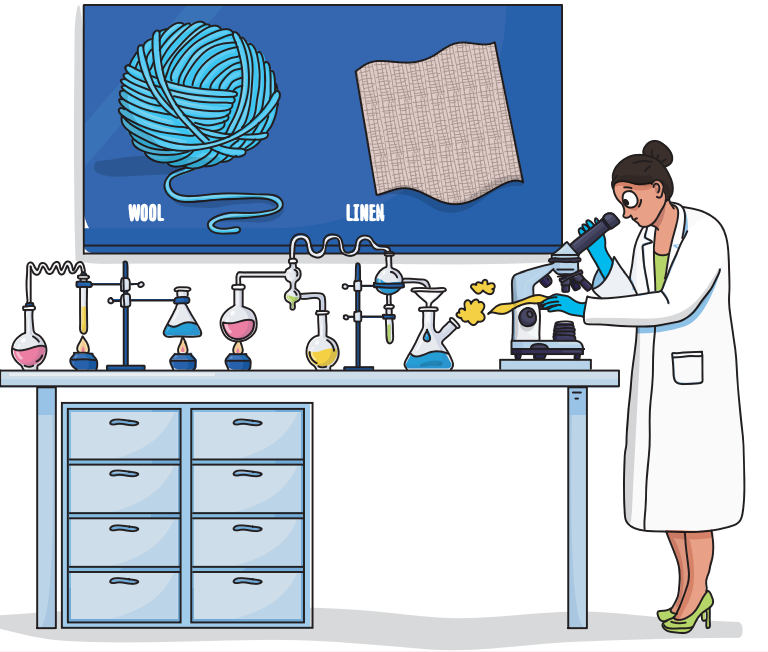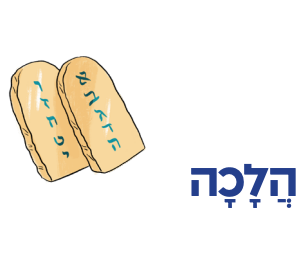Illustration Credit: Elad Lifshitz, Dov Abramson Studio

Halakhah הֲלָכָה
Let’s talk about…shaatnez!
לֹ֤א תִלְבַּשׁ֙ שַֽׁעַטְנֵ֔ז צֶ֥מֶר וּפִשְׁתִּ֖ים יַחְדָּֽו׃
You shall not wear shaatnez, wool and linen together.
A mishnah explains that the word for the mitzvah of שַׁעַטְנֵז (shaatnez) is an acronym, describing a piece of clothing which is שׁוּעַ (shua, combed), טָווּי (tavui, spun), and נוּז (nuz, twisted) (Mishnah Kilayim 9:8).
Nowadays, shaatnez describes any clothing that contains both wool and linen. It only applies to wool and linen that are mixed together, so you can still wear a wool shirt and linen pants at the same time.
What’s wrong with shaatnez?
Shaatnez is usually understood to be a חֹק (hok)—a mitzvah that we observe simply because God commanded it. However, there are some other explanations. For example, Rambam says that not wearing shaatnez was a way for Benei Yisrael to distinguish themselves from the people who lived in Eretz Canaan, who wore shaatnez.
Fun facts! בִּגְדֵי כְּהֻנָּה (bigdei kehunah, clothing for kohanim/priests) are actually supposed to be shaatnez (Shemot 28:6 and 39:29). צִצִּית (tzitzit) are allowed to be shaatnez (Rashi on Devarim 22:12), and some sources say they are even supposed to be shaatnez! (See the Midrash section in Devash for Va’ethanan.)
- Can you explain why tzitzit and bigdei kehunah might be an exception to the shaatnez rule?
- Can you think of what these two kinds of clothing have in common?
Shaatnez testing
How do you know if a piece of clothing contains shaatnez? When people made their own clothes, it wasn’t such a problem. Still, throughout Jewish history, there were methods for shaatnez testing. For example, sometimes a thread from clothing would be burned, because people could identify materials based on how they burned (Rema, Yoreh Deah 302:2). Today, you can take or send clothing to a special lab where experts examine it to identify if it has wool and linen.

-------------------
-------------------





